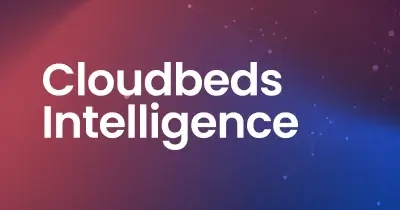
By Jonathan Gough | Lighthouse
A question that likely keeps you up at night is, ‘How can I boost revenue per available room (RevPAR) and outpace my competitors?’ If you found yourself nodding your head in agreement, then you’re in the right place.
The answer lies in optimizing your hotel room prices. It’s the bedrock of hotel revenue management, and for good reason.
A well-executed room pricing strategy can be the difference between just hitting your KPIs and exceeding them, between trailing behind competitors and looking at them in your rearview mirror.
Now, let’s delve deeper into the concept of room price optimization and explore how it can help your lodging business achieve healthier commercial performance.
Room price optimization is a catch-all term for the process of adjusting your prices in real-time based on various factors such as market demand and supply, competitor pricing, historical data, customer behavior, and market trends. The ultimate goal is to set the right price at the right time for the right customer to maximize your property’s revenue and drive profitability. What is room price optimization?
A brief history of room price optimization
Given the multitude of factors to consider and the analysis required, establishing accurate real-time room prices for your property may seem complex and time-consuming. And if you do it all manually, it is.
That’s why, traditionally, hoteliers have set different weekday and weekend rates and made seasonal rate changes in advance based on historical demand patterns.
Or you may have used a cost-plus pricing approach, whereby you calculated all fixed and variable costs associated with operating your hotel and subsequently appended the profit margin to this total cost by applying a markup to each room type.
The glaring issue with older revenue management strategies like these is that by selling at flat rates for the majority of the time, you are ignoring market conditions, competitor rates, market data, and variable demand.
Given the stratospheric rise of online bookings, in tandem with online travel agencies (OTAs) and metasearch sites, the hotel pricing and distribution environment began evolving at an extraordinary pace, and more agile pricing strategies transitioned from a nice to have to an essential instrument.
Fast-forward several years, and the arrival of the pandemic once again upended the hospitality industry’s playbook. If you thought your hotel didn’t need a more flexible pricing structure before, you undoubtedly started reevaluating.
Today, the inevitable outcome of using traditional hotel pricing strategies over a dynamic pricing strategy will be a loss of revenue and your compset taking the lead in your market.
Dynamic pricing and the role of technology
Optimizing your room prices to maximize every revenue opportunity requires an overarching strategy that feeds into this goal. Dynamic pricing is now the industry standard for this purpose and can be used almost interchangeably with the term room price optimization or pricing optimization.
With dynamic pricing, room rates are not fixed but are adjusted based on market demand, competition, time of booking, customer behavior, occupancy, and other factors that can influence booking patterns.
Prices change dynamically (hence the name) using real-time data to maximize your revenue and occupancy rates.
As a basic example, you can capitalize on high-demand periods by increasing prices and selling to those willing to pay slightly more, and during times of low demand, prevent revenue loss by lowering prices.
However, it’s simply unfeasible to manually gather, compile, analyze, and set room prices in real-time before the data becomes obsolete. This is where technology comes into play.
Time spent collecting and analyzing data can run into multiple hours per day. To fully optimize your room prices you need pricing software to take care of the heavy lifting for you.
With a room price optimization tool in place, you can automate a dynamic pricing strategy. Based on real-time data sets, you are provided with room price recommendations (sometimes up to a year in advance), so your hotel business is always poised to optimize rates and capitalize on every opportunity.
But it’s not solely about revenue. Optimizing your room prices with a dynamic pricing strategy has a number of benefits.
Why is hotel price optimization an essential pillar of revenue management?
When executed correctly, room price optimization can lead to substantial improvements in business performance and yield remarkable results for your hotel, including:
Time-saving. Being served automatic pricing recommendations means you no longer have to conduct manual pricing research and analysis, saving you countless hours of work, which you can spend where it matters most, with your guests.
Preventing revenue slippage. By automating your room pricing strategy, you eliminate the risk of manual pricing inaccuracies and human error, thereby preventing crucial revenue from being lost.
Capturing new revenue opportunities. Adjusting your room prices based on real-time forecasts and competitor data means you can seize every revenue opportunity, irrespective of whether you’re in a period of low or high demand. You can target different guest segments depending on the season and your active channels.
Gaining a competitive advantage.Understanding and rapidly responding to demand and competitor pricing with the correct price point ensures you are more competitive. If you can offer better value at a similar price to your compset, you’ll likely attract more bookings.
Maximizing occupancy. Price optimization helps manage occupancy levels. During peak seasons, higher prices can prevent overbooking, while lower prices during off-peak times can attract more guests. Depending on the season, you can implement length of stay restrictions to further maximize occupancy.
What to be mindful of when optimizing your room prices
An industry-leading dynamic pricing solution will shoulder most of the load when it comes to optimizing rates, but it’s still vital to fully grasp the market and customer segments in which you’re operating.
A pricing optimization tool operates by analyzing the data inputs it receives. However, with years of industry experience and deep knowledge of your specific market, you may possess an insight here and there the system might not be aware of.
Tools like these typically offer customizable settings, allowing you to fine-tune them to your particular needs or even bypass pricing recommendations when you deem it appropriate.
While the tool is your co-pilot, you’re still in the hot seat. Consequently, there are aspects you should have a sound understanding of, such as:
Distribution.
Working with OTAs and other distribution channels is now inevitable due to their exposure and volume of bookings, but partnering with these sites incurs a hefty commission that eats into profit. You need to develop a strategy to drive direct bookings and carefully manage your relationships with third-party sites, particularly the commission level to effectively manage the bottom line.
Events.
Special events can trigger a spike in demand centered around particular dates. While a pricing optimization solution will take these into account, it’s always wise to have your own calendar to ensure prices are in the right ballpark for these key revenue drivers.
Seasonality.
Conventionally, you will have a high and low season, often coinciding with public or school holidays and weather conditions. It’s worthwhile to recognize these periods of high and low demand to understand why there are broader shifts in pricing.
Trends.
Traveler trends can significantly influence demand. Some destinations may be evergreen tourism hotspots, while others may have fluctuations due to a newer craze. It makes sense to keep your finger on the pulse and be attuned to consumer trends to deliver the best guest experience possible.
Competition.
It’s always important to know who you’re up against so you aren’t mispricing rooms. In this context, it’s paramount to make sure you are competing against the right properties and have established the correct compset, factoring in things like star rating, facilities, or type of accommodation for optimal pricing.
Finding the right pricing optimization tool
Having defined your most relevant compset, you can now look to implement a dynamic pricing strategy.
Begin by examining your current revenue management metrics – average daily rate (ADR), RevPAR, and occupancy being the most salient. Benchmark these against market leaders and use them as your north star. These targets should guide you toward the performance level you aspire to reach when employing a solution that optimizes your pricing.
With your overarching goals in mind, you can start looking for a pricing optimization tool. Below are some areas of consideration:
Business needs. Room price optimization can typically be subsumed into a more comprehensive revenue management system (RMS). However, if you are a smaller independent hotel there are simplified options available focusing solely on automating a dynamic pricing strategy without the full suite of features an RMS provides.
Budget. Set a definitive, clear budget to match your financial limitations, taking into account upfront and recurring costs. An RMS will likely be higher on the cost scale due to its sophistication and a simplified pricing optimization tool on the lower end.
Usability. A tool with an intuitive user interface will present pricing insights in a straightforward and visual manner, enabling you to quickly understand the system and make well-informed decisions. It should also have customizable settings so you can stay in control of your pricing.
Data quality. The old adage of garbage in, garbage out rings true here. If your solution isn’t using accurate, real-time data, your pricing optimization efforts will falter before they start.
PMS integration. To get the most out of a dynamic pricing solution, it should integrate smoothly with your existing property management system (PMS).
Setup and support. To start optimizing your prices immediately after adopting the solution, consider cloud-based software that offers seamless implementation. Additionally, prioritize providers with industry-leading customer support.
As with all commercial strategies, this isn’t a set-and-forget activity. To surpass your targets, you should continue monitoring your strategy, examining how you’re tracking against your KPIs, and tweaking your pricing where necessary.
An approach to pricing that unlocks your commercial potential
In the fiercely competitive hotel industry, optimizing your prices by automating a dynamic pricing strategy enables you to capture the right customer at the right price at the right time.
Each moment you take manually working through pricing data is time that competitors who have already adopted dynamic pricing are using to drive incremental revenue.
By selecting the appropriate pricing optimization tool, you can take control of your pricing strategy to maximize your RevPAR, leading to sustained profitability over time.
Lighthouse (formerly OTA Insight) is the leading commercial platform for the travel & hospitality industry. They transform complexity into confidence by providing actionable market insights, business intelligence, and pricing tools that maximize revenue growth. Lighthouse continually innovates to deliver the best platform for hospitality professionals to price more effectively, measure performance more efficiently, and understand the market in new ways. At Cloudbeds, we’re proud to partner with leading solutions like Lighthouse to help lodging operators maximize revenue. Learn how you can optimize room prices today. A post by Lighthouse



















